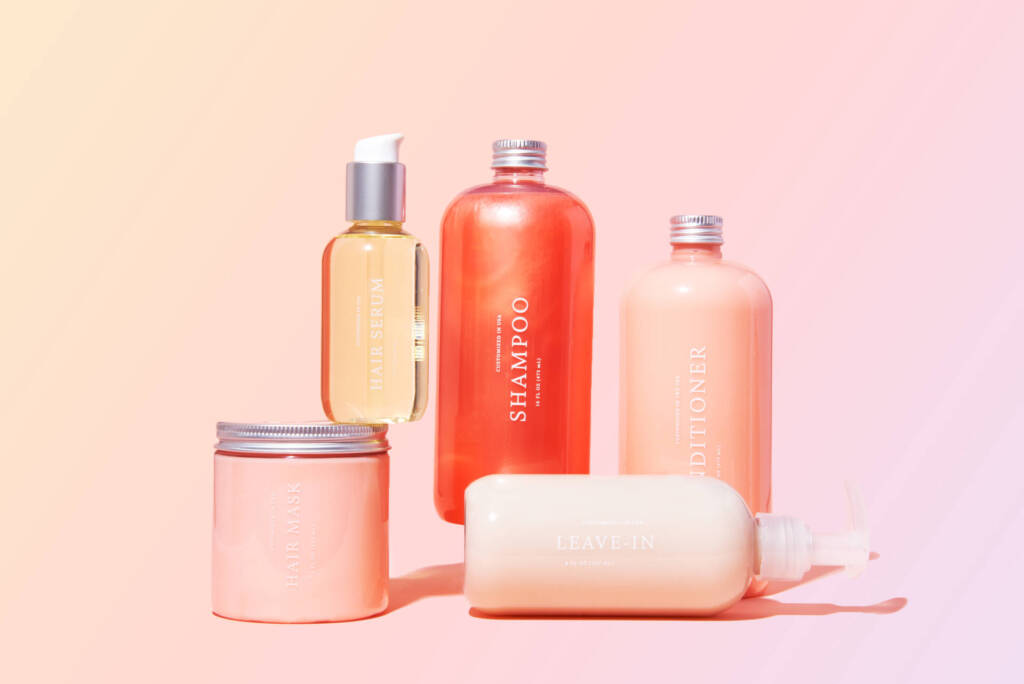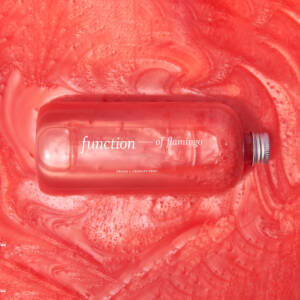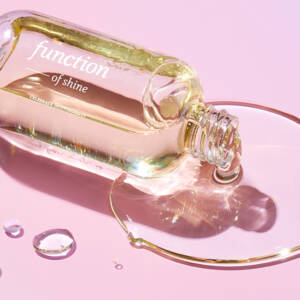Aside from parabens and sulfates, silicones are perhaps the next most controversial ingredients in haircare products. From shampoo and conditioner to serums and creams, you’re sure to spot at least one of these polymers in the ingredient list.
But is silicone bad for your hair? Should you actively steer clear of it? Given that common silicone woes like weighed-down hair and product buildup are often discussed, it’s no wonder you have questions.
If you’re undecided about silicones in hair products, read on for our big reveal.
Silicone 101: What Does Silicone Do to Hair?
If it’s your first time hearing about the S-word, silicone is a polymer extracted from silica (the same material that makes up the sand you see at the beach). In haircare products, silicone is primarily used as a synthetic ingredient that coats the hair shaft upon application. Because this polymer is highly resistant to heat and sunlight, it’s prized for its stability in many hair product formulations.
There are different types of silicones categorized into the following groups:
- Non-water-soluble silicones: As the name suggests, these silicones don’t dissolve in water. You will need to use shampoos infused with surfactants (cleansing agents like sulfates) to effectively wash these polymers away. Examples include dimethicone, cyclopentasiloxane, and amodimethicone.
- Water-soluble silicones: This class of silicones breaks down upon contact with water without the need for strong surfactants. They’re ideal for haircare routines that use sulfate-free shampoos and co-washes, although it’s highly recommended to use a clarifying shampoo once in a while for a deep cleanse. Examples include dimethicone PEG-8 phosphate, dimethicone copolyol, and lauryl methicone copolyol.
- Evaporating silicones: Also called volatile silicones, these synthetics evaporate anywhere from a few minutes to a few hours after application. The good news is that they’re less likely to leave behind product residues, minimizing the problem of silicone buildup. Plus, they’re easily rinsed away with sulfate-free cleansers. Examples include cyclomethicone and cyclopentasiloxane.
The Pros of Silicones in Hair Products
Before we talk about whether silicone is bad for hair, let’s look at its upsides. Many of its benefits come from the protective coating it provides for hair cuticles (the outermost layer of the hair fiber). But don’t mistake silicone for an occlusive (a substance that forms a waterproof barrier).
According to an article published in the International Journal of Trichology, silicones:
- Act as a conditioning agent to minimize friction, tangles, and frizz while simultaneously improving the shine, smoothness, and manageability of your locks
- Protect your hair strands from harmful external elements like pollutants, humidity, abrasion, and heat styling
- Help minimize moisture loss from the fibers
- Reflect light off your hair shafts so that hair appears shiny
- Enhance the body of your tresses for a volumizing effect
All in all, we get why you’re tempted to reach for the silicone hair products on your vanity — they bestow an instant “glow-up” on your locks.
The Cons of Silicones in Hair Products
If these polymers leave your hair feeling silky-smooth and looking its best, why do they have such a bad rap? This 2019 medical article has the answers:
- Silicones, particularly the non-water-soluble kind, are notorious for creating product buildup on the scalp and hair. This can cause your strands to look and feel greasy. In more serious cases, you may even see flakes. (Umm, no thanks!)
- Remember when we said silicones create a film on hair fibers to keep out external stressors like pollutants? Well, the same barrier can work against you by preventing moisture and other nourishing haircare products from absorbing into your hair shafts, creating lower hydration levels within the strands. The resulting dryness and dullness may progress to hair breakage and scalp irritation.
- You may think that regularly using a sulfate-based shampoo will resolve all of your hair woes. While these formulations can remove silicone buildup, they also strip away your scalp’s natural oils. This puts you at greater risk of dry hair, frizz, color-fading, split ends, and hair breakage, especially for curly and coily hair types.
The bottom line is that silicones create product buildup on your head. It’s the proverbial feeding ground for hair-y issues like excess oiliness, dullness, and scalp irritation. When you bring in a sulfate-based shampoo to clear out the scalp debris, it can worsen said problems due to the drying nature of sulfates.
How to Make Silicones Work for Your Strands (If You Want to)
Is silicone bad for har? So far it seems like the answer is yes. But does that mean you should do a complete 180 and only use silicone-free products from now on? Not necessarily. Depending on your hair goals, routine, and shampoo type, you can still make silicones work for you while minimizing their unwanted effects.
Be Mindful of Your Hair Goals
Are you looking to detangle your curly hair with minimal pain and frustration? Or perhaps you regularly use styling products and need a formidable heat protectant against hair damage? These examples are just the tip of the iceberg when leveraging silicones to your advantage.
As we’ve mentioned, silicones are a potent group of ingredients that tackle common issues such as frizz, tangles, and roughness. Plus, silicones offer protection from heat damage, making them a popular ingredient in many heat protectants. Case in point: Function of Beauty’s custom serum is a silicone-based styling product that’s proven to thermally protect your hair from heat damage up to 400 degrees!
If you’re on the lookout for products that can level up the shine, smoothness, and softness of your tresses, silicones could be a go-to option.
Use Silicones in the Last Few Steps of Your Routine
Remember that silicones act as a water-resistant barrier around your fibers. As much as the polymer keeps moisture in, it can also act as a stop sign for hydrating products. This prevents your hair shafts from absorbing what they need to look healthy.
For that reason, silicones should go on after you’ve applied all your other products. An ideal haircare routine may look like this: silicone-free shampoo and conditioner → hair mask → leave-in treatment → silicone-based styling serum.
Stay On Top of Your Hair-Clarifying Game
No matter which silicone product you use, make sure you do a thorough job of removing its residue afterward. For the co-washing crowd, that means you’ll have to use a sulfate-free clarifying shampoo every now and then to effectively remove all traces of silicones from your mane. That’s because co-washes are generally formulated with gentle cleansing agents that have a hard time washing off water-resistant silicones.
Is Silicone Bad for Your Hair? You Be the Judge
As you’ve learned, the answer to “is silicone bad for hair?” may not always be in the affirmative. It depends on what you’re looking for in your haircare routine and whether you’ve used and removed silicones the right way.
For all its positives, silicone does have a few potential downsides that originate from its tendency to accumulate on your head. So, if you would like to avoid any potential mishaps, simply choose silicone-free hair products.
That’s where Function of Beauty can help. With fully customizable formulations, you have the option to take silicone out of your custom shampoo and conditioner. Just tick the “silicone-free” checkbox when you take our hair quiz!





